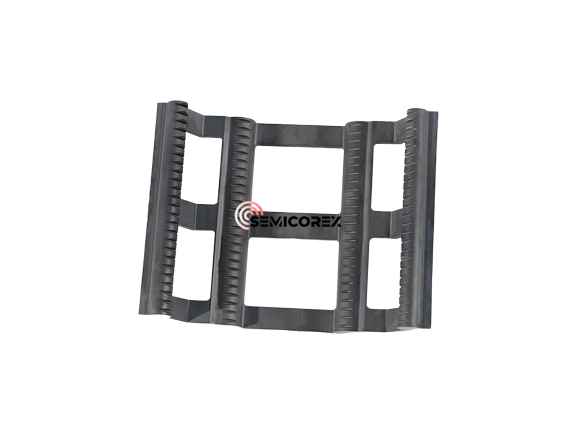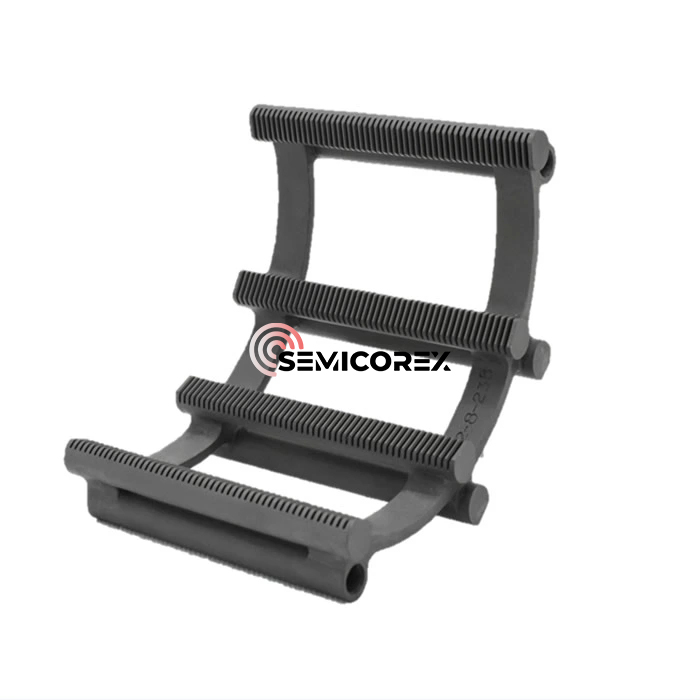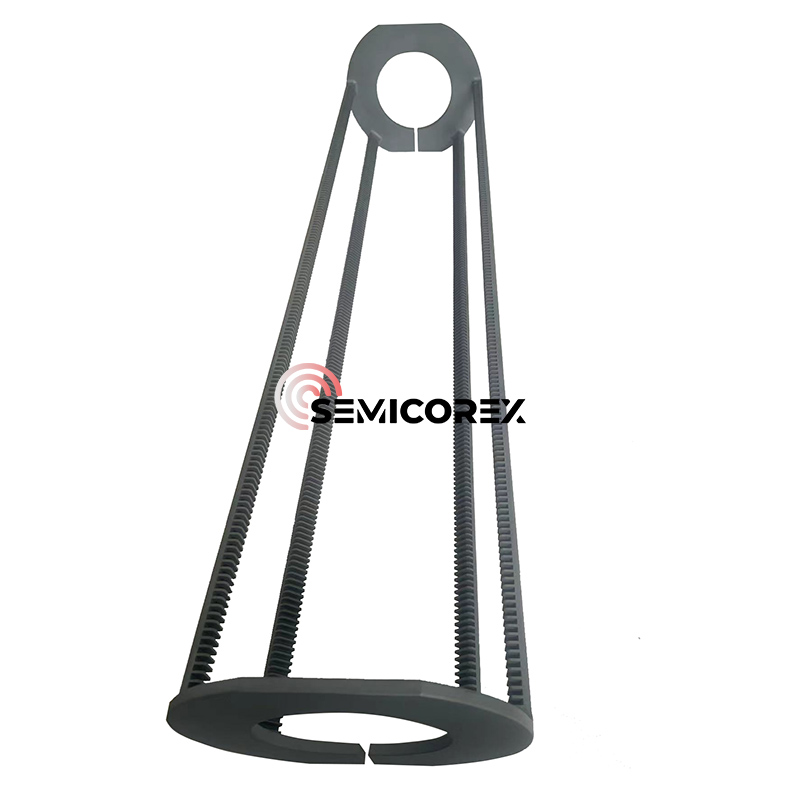
- English
- Español
- Português
- русский
- Français
- 日本語
- Deutsch
- tiếng Việt
- Italiano
- Nederlands
- ภาษาไทย
- Polski
- 한국어
- Svenska
- magyar
- Malay
- বাংলা ভাষার
- Dansk
- Suomi
- हिन्दी
- Pilipino
- Türkçe
- Gaeilge
- العربية
- Indonesia
- Norsk
- تمل
- český
- ελληνικά
- український
- Javanese
- فارسی
- தமிழ்
- తెలుగు
- नेपाली
- Burmese
- български
- ລາວ
- Latine
- Қазақша
- Euskal
- Azərbaycan
- Slovenský jazyk
- Македонски
- Lietuvos
- Eesti Keel
- Română
- Slovenski
- मराठी
- Srpski језик
Silicon Carbide Wafer Boat
Behind every high-temperature process in wafer manufacturing lies a silent yet crucial player: the wafer boat. As the core carrier that directly contacts the silicon wafer during the wafer processing, its material, stability, and cleanliness are directly related to the final chip yield and process stability. Among various carrier materials, silicon carbide (SiC) boats are gradually replacing traditional quartz solutions, becoming the preferred solution for advanced processes and high-end equipment.
Why SiC wafer boats?
With the advancement of process nodes below 7nm and the expansion of high-temperature process windows, traditional quartz wafer boats are increasingly struggling in terms of thermal stability, particle control, and lifespan management.
Silicon carbide wafer boats, however, are gradually gaining prominence due to the following advantages:
1.Stable at high temperatures:
They offer long-term operating temperatures of 1350-1600°C, easily handling mainstream processes such as CVD, diffusion, and annealing. Even brief exposure to temperatures of 1800°C shows no softening or deformation, making them suitable for higher-end equipment such as single crystal silicon carbide furnaces.
2.Low expansion and high thermal shock stability:
With a low coefficient of thermal expansion, they can withstand rapid temperature increases and decreases, minimizing structural cracking caused by thermal stress. They maintain excellent morphology and performance in high-temperature, complex atmospheres (such as hydrogen, nitrogen, ammonia, and fluorides).
3.Clean surface and extremely low contamination:
High material purity with minimal metal impurities. Low surface roughness, preventing secondary contamination of silicon wafers; excellent surface roughness control, with Ra below 0.1μm, suppresses particle shedding and meets the cleanroom requirements of advanced processes;
4. One-piece molding, precision-machined wafer boat structures can be directly formed through moldless 3D printing, eliminating the need for molds, significantly improving customization efficiency; combined with five-axis machining and wire-cutting technology, the boat's teeth are burr-free, preventing scratches on the wafers and ensuring smooth automated handling;
5. High strength and long life:
A single boat boasts high load-bearing strength and can simultaneously support dozens to hundreds of 12-inch wafers. Compared to traditional quartz boats, the boat's average lifespan is 5-10 times longer, reducing equipment changeover frequency and total cost of ownership.
Application Scenario
The wide adaptability of silicon carbide wafer boats extends their application beyond the semiconductor field to a variety of high-temperature process scenarios, including new energy materials, LED manufacturing, and nuclear energy research.
Semiconductor Industry
It is suitable for key processes such as oxidation, diffusion, CVD deposition, and ion implantation, making it an indispensable high-temperature carrier for sub-7nm process lines.
Photovoltaic Industry
In emerging battery technologies such as TOPCon and HJT, wafer boats are used in high-temperature furnace processes such as LPCVD and annealing, helping to improve energy efficiency and conversion rates.
Third-Generation Semiconductors
For GaN and SiC epitaxial growth processes in LEDs, they support sapphire or silicon carbide substrates. They withstand corrosive gases such as NH₃ and HCl, supporting the manufacture of high-frequency power devices.
New Energy Materials & Research High-Temperature Platform
Supports the sintering reaction of lithium battery cathode materials and the heat treatment of nuclear industry materials, combining heat resistance, corrosion resistance, and cleanliness.
Semicorex offers high-purity customized SiC wafer boats. If you have any inquiries or need additional details, please don't hesitate to get in touch with us.
Contact phone # +86-13567891907
Email: sales@semicorex.com







